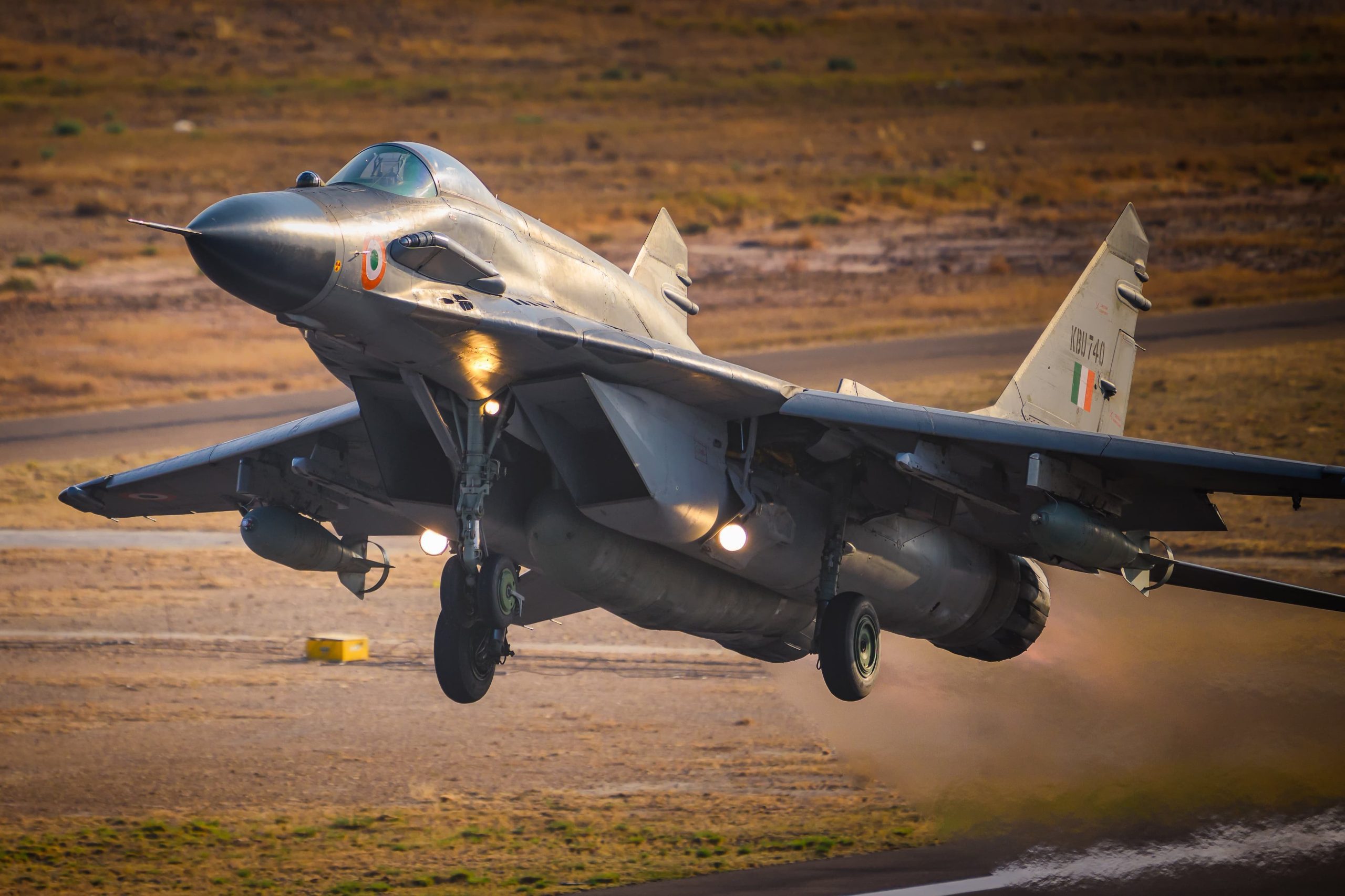Operation SINDOOR has emerged as a major milestone in India’s pursuit of self-reliance in national security, demonstrating the country’s growing technological and operational capabilities in countering asymmetric warfare. In the wake of the terror attack on tourists in Pahalgam in April, the Indian Armed Forces responded with precision and strategic restraint, targeting terrorist infrastructure without crossing the Line of Control or international boundaries.
On the night of 7–8 May 2025, multiple attempts were made by Pakistan to target military installations across Northern and Western India—including Awantipura, Srinagar, Jammu, Pathankot, Amritsar, Kapurthala, Jalandhar, Ludhiana, Adampur, Bhatinda, Chandigarh, Nal, Phalodi, Uttarlai, and Bhuj—using drones and missiles. These threats were effectively neutralised by India’s Integrated Counter-Unmanned Aerial Systems (UAS) Grid and Air Defence mechanisms. The network of radars, control centres, low-level air defence guns, and both ground- and aircraft-launched missiles provided a coordinated and impenetrable shield, ensuring minimal damage.
In retaliation, on the morning of May 8, Indian forces targeted and disabled several Pakistani air defence systems, including a radar site in Lahore. This marked a significant operational success, achieved without loss of Indian assets. Indigenous systems, particularly the Akash Surface-to-Air Missile system, played a crucial role in neutralising threats. Designed to protect strategic locations from aerial attacks, the Akash system operated effectively in both autonomous and group modes, with the ability to simultaneously engage multiple targets. The system, fully mounted on mobile platforms, includes advanced electronic counter-countermeasure capabilities.
The Integrated Air Command and Control System (IACCS) of the Indian Air Force provided the backbone for real-time coordination, enabling synchronized responses across multiple units of the Army, Navy, and Air Force. Offensive operations also saw the effective deployment of loitering munitions, also known as “suicide drones,” to target high-value Pakistani assets, including airbases at Noor Khan and Rahimyar Khan. These precision strikes were completed within 23 minutes, highlighting the efficacy of India’s surveillance, planning, and jamming technologies, which successfully bypassed Chinese-origin Pakistani air defence systems.
Following the operation, Indian forces recovered debris from neutralised threats, including Chinese-origin PL-15 missiles, Turkish-origin UAVs, long-range rockets, quadcopters, and commercial drones, showcasing India’s ability to counter advanced foreign-supplied weaponry with indigenous air defence and electronic warfare systems.
In a press briefing on May 12, Director General of Military Operations, Lt Gen Rajiv Ghai, outlined the layered defence architecture deployed during the operation. He noted that while strikes were carried out within Indian territory, Pakistan’s retaliatory response was anticipated. A combination of counter-UAS systems, shoulder-fired weapons, legacy air defence systems, and modern platforms was used to protect strategic and logistic assets. This multi-tiered approach ensured civilian and military infrastructure remained secure during attempted air incursions by Pakistan on the night of May 9–10.
India’s satellite capabilities also played a key role in the operation. On May 11, ISRO Chairman V. Narayanan stated that at least ten satellites were deployed round-the-clock to support strategic operations and national security. These systems provided constant monitoring of India’s 7,000-km coastline and its northern borders.
The success of Operation SINDOOR also reflects the growing strength of India’s drone ecosystem. The Drone Federation of India (DFI), representing over 550 companies and 5,500 drone pilots, has played a key role in promoting indigenous development, manufacturing, and deployment of drone and counter-drone technologies. Indian companies such as Alpha Design Technologies, Tata Advanced Systems, Paras Defence & Space Technologies, and IG Drones are at the forefront of defence-focused drone innovation.
The Indian drone market is expected to grow to $11 billion by 2030, representing over 12 percent of the global share. This growth has been supported by policy reforms, including the 2021 ban on imported drones and the Production Linked Incentive (PLI) scheme for drone and component manufacturing. The PLI scheme, with an outlay of ₹120 crore across three financial years, has accelerated domestic R&D and industrial output.
India’s broader defence manufacturing sector continues to expand under the Make in India initiative. In financial year 2023–24, indigenous defence production reached a record ₹1.27 lakh crore, while exports soared to ₹23,622 crore in 2024–25—a 34-fold increase since 2013–14. Strategic reforms and robust private-sector participation have led to the development of advanced platforms such as the Dhanush and ATAGS artillery systems, Arjun tanks, Light Specialist Vehicles, LCA Tejas, ALH, LUH, Akash missile systems, and various naval assets including indigenous aircraft carriers and submarines.
The government has also implemented initiatives such as iDEX, SRIJAN, and established Defence Industrial Corridors in Uttar Pradesh and Tamil Nadu to encourage innovation and facilitate production. Major acquisitions including the Prachand Light Combat Helicopters and the ATAGS artillery system reflect India’s commitment to indigenisation.
With defence exports surpassing ₹24,000 crore in FY 2024–25, the government now aims to reach ₹50,000 crore by 2029. India continues to work towards becoming a global defence export leader by 2047, supported by record procurement contracts and ongoing investment in innovation.










